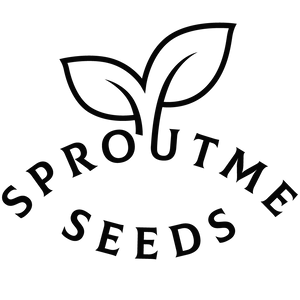Hyssop
Hyssop is an aromatic and attractive herbaceous perennial known for its ornamental value, culinary uses, and medicinal properties. It's a favorite among gardeners for its beautiful flowers and ability to attract pollinators.
Preparing for Growing:
- Selecting a planting location: Choose a sunny location with well-drained soil.
- Soil preparation: Prepare the soil by removing weeds and adding organic matter to improve fertility and drainage.
- Purchasing or preparing containers/pots: If growing in containers, choose pots with good drainage holes.
Starting from Seeds Indoors:
- Seed preparation: Hyssop seeds may benefit from stratification, a process of chilling them in the refrigerator for a few weeks before planting.
- Choosing suitable pots/containers: Use seed trays or small pots filled with seed-starting mix.
- Sowing and caring for seeds indoors: Sow seeds on the surface of the soil and lightly press them down. Keep the soil consistently moist and provide ample light for germination.
- Transplanting to larger containers if necessary: Transplant seedlings to larger containers once they have developed several sets of true leaves.
Starting from Seeds Outdoors:
- Soil preparation: Prepare a seedbed with well-draining soil and remove any weeds or debris.
- Selecting appropriate timing and method for outdoor sowing: Sow hyssop seeds outdoors in early spring after the danger of frost has passed, just below the soil surface.
- Caring for seeds outdoors: Keep the soil consistently moist until seeds germinate, which typically takes 2-3 weeks.
Growing in Containers/Pots:
- Selecting suitable plants for containers: Choose compact hyssop varieties suitable for container growth.
- Container and soil preparation: Use containers with good drainage and fill them with well-draining potting mix.
- Sowing or transplanting plants into containers: Sow seeds or transplant seedlings into containers, ensuring they are planted at the same depth as they were in their original containers.
- Caring for container plants: Place containers in a sunny location, water when the top inch of soil feels dry, and fertilize with a balanced fertilizer during the growing season.
Transplanting to Garden:
- Soil and planting site preparation: Choose a location with well-draining soil and full sun.
- Correct timing and method for transplanting: Transplant seedlings outdoors after the last frost date, spacing them 12-18 inches apart.
- Post-transplant care: Water newly transplanted seedlings deeply and provide shade for a few days to help them acclimate to outdoor conditions.
Plant Care:
- Watering: Hyssop plants have moderate water needs. Water deeply when the top inch of soil feels dry.
- Fertilizing: Apply a balanced fertilizer once or twice during the growing season to promote healthy growth.
- Weeding: Keep the area around hyssop plants free of weeds to reduce competition for nutrients and water.
- Pest and disease management: Hyssop is generally resistant to pests and diseases but may occasionally be affected by aphids or powdery mildew. Monitor plants regularly and treat any issues promptly.
Harvesting:
- Determining when plants are ready for harvest: Harvest hyssop leaves and flowers when they are fully developed and at their peak of flavor.
- Harvesting and storage guidelines: Harvest leaves and flowers in the morning after the dew has dried but before the sun is too hot. Dry them in a well-ventilated area out of direct sunlight and store them in airtight containers in a cool, dark place.
When to Start from Seeds by USDA Plant Hardiness Zones:
- Start hyssop seeds indoors 6-8 weeks before the last frost date in your area, or sow them outdoors after the danger of frost has passed.
Fast Facts:
- Planting depth: Sow seeds just below the soil surface.
- Seed spacing: Sow seeds thinly and space them 6-12 inches apart.
- Plant spacing: Space plants 12-18 inches apart.
- Number of seeds per pot/container: Sow several seeds per container and thin to the strongest seedling.
- Water preferences: Hyssop prefers consistently moist soil.
- Sun preferences: Full sun.
- Soil type and other important factors: Well-draining soil with a pH of 6.0 to 7.0.
- Companion Planting: Plant hyssop near cabbage, grapes, or roses to attract beneficial insects.
- Temperature Preference: Hyssop prefers moderate temperatures and is tolerant of light frost.
- Days to Germination: Hyssop seeds typically germinate in 14-21 days.
- Days to Harvest: Harvest hyssop leaves and flowers when they are fully developed and at their peak of flavor.







